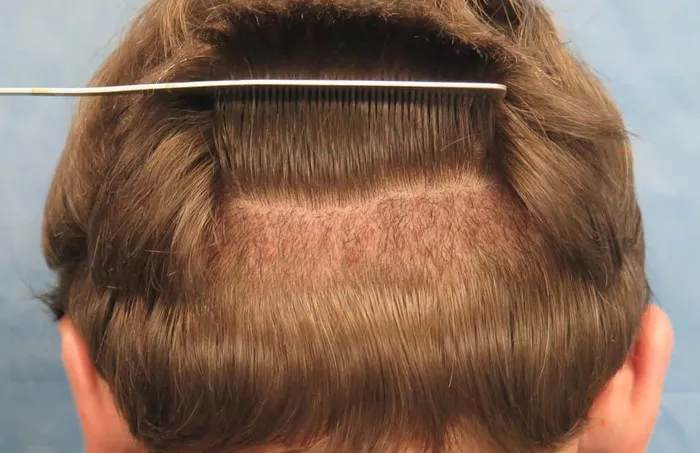When it comes to addressing hair loss in women, one of the most effective solutions is a hair transplant. Hair transplant procedures have come a long way in recent years, offering hope and confidence to countless women struggling with thinning or balding hair. However, before embarking on this transformative journey, it’s crucial to understand the factors that influence the cost of a hair transplant, the benefits it can bring, and the considerations you should keep in mind. In this comprehensive guide, we’ll explore all these aspects to help you make an informed decision about your hair transplant journey.
What is hair transplant?
A hair transplant is a surgical procedure that involves the removal of hair follicles from one part of the body, typically the back of the scalp, and transplanting them to an area with hair loss or thinning. This procedure is commonly used to address male pattern baldness and female hair thinning. There are two primary methods: Follicular Unit Transplantation (FUT) and Follicular Unit Extraction (FUE). FUT involves removing a strip of scalp, while FUE extracts individual hair follicles. The transplanted hair continues to grow naturally, offering a long-term solution for hair restoration and improved self-confidence.
Hair transplant: Are there any differences between women and men?
There are notable differences in hair transplants between women and men. While the fundamental procedure remains the same—transplanting hair follicles from a donor area to a recipient area—the factors influencing success and outcomes vary. Women often experience diffuse hair thinning rather than distinct balding patterns seen in men. This can make donor hair selection and preservation more challenging. Additionally, women’s hairlines tend to be lower and more rounded, necessitating careful design for a natural look. Hormonal factors, like female pattern hair loss, can affect treatment plans. Despite these distinctions, hair transplants can effectively address female hair loss when tailored to individual needs.
Factors Influencing the Cost of a Hair Transplant for Women
Hair transplant costs can vary widely depending on various factors. Understanding these factors will give you a clearer picture of what to expect when it comes to the financial aspect of your hair transplant.
1. Type of Hair Transplant Procedure
Hair transplant procedures can be categorized into two primary types: Follicular Unit Transplantation (FUT) and Follicular Unit Extraction (FUE). FUT typically costs less than FUE because it involves the removal of a strip of hair-bearing scalp, whereas FUE extracts individual hair follicles. The choice of procedure will significantly impact the overall cost.
2. Extent of Hair Loss
The extent of your hair loss will also play a crucial role in determining the cost. If you have minor thinning or a small area to cover, the cost will generally be lower compared to a more extensive procedure required for severe hair loss.
3. Geographic Location
Where you choose to have your hair transplant can affect the price tag. Clinics in urban areas with higher living costs may charge more than those in smaller towns or regions with lower overhead expenses.
4. Clinic Reputation and Experience
The reputation and experience of the clinic and the surgeon performing the procedure can impact the cost. Highly experienced surgeons and reputable clinics often charge higher fees, but they may provide more reliable and satisfying results.
5. Additional Services
Some clinics offer comprehensive packages that include post-surgery care, medications, and follow-up appointments. These added services can increase the overall cost but can also provide better peace of mind and results.
Understanding the Benefits of a Hair Transplant
Now that we’ve covered the factors that affect the cost of a hair transplant, let’s delve into the numerous benefits that make it a popular choice among women dealing with hair loss.
1. Natural-Looking Results
Hair transplants offer one of the most natural-looking solutions to hair loss. This is because your own hair follicles are used, ensuring a seamless blend with your existing hair.
2. Permanent Solution
Unlike temporary solutions such as wigs or topical treatments, hair transplants provide a permanent solution to hair loss. Once the transplanted hair grows, it’s there to stay.
3. Improved Confidence and Self-Esteem
For many women, hair loss can lead to a loss of confidence and self-esteem. A successful hair transplant can help restore these feelings, enhancing overall quality of life.
4. Low Maintenance
Transplanted hair requires no special maintenance beyond regular hair care. You can style, color, and cut it just like your natural hair.
5. Minimal Scarring
With modern hair transplant techniques, scarring is minimal. FUE, in particular, leaves tiny, almost imperceptible scars that are easily concealed by your remaining hair.
Considerations Before Getting a Hair Transplant
Before undergoing a hair transplant, several critical considerations are essential for a successful and satisfying experience. Firstly, have realistic expectations regarding the procedure’s outcomes; it may not replicate the full density of your natural hair. Consultation with a specialized surgeon is crucial for a personalized treatment plan. Understand that there will be a recovery period post-surgery, involving temporary swelling and discomfort. Following post-operative care instructions diligently is vital. Consider the cost, including potential additional expenses like medications and follow-up appointments. Lastly, be prepared for any unexpected complications by discussing them with your surgeon during the initial consultation. These considerations ensure an informed decision and better results.
See Also: How Long Between Hair Transplants: A Comprehensive Guide
In conclusion
A hair transplant can be a life-changing solution for women dealing with hair loss. While the cost may vary, the benefits of improved confidence, permanent results, and minimal maintenance can outweigh the expenses. However, it’s vital to carefully consider all factors and consult with a qualified specialist before making a decision. By doing so, you can embark on your hair transplant journey with confidence, knowing you’ve made an informed choice that can lead to a more fulfilling and confident life.


